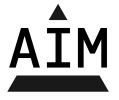
Table of Contents
- Abstract
- Introduction of Teaching Aids
- Materials and Methods
- Results and Discussion
- Conclusion
- Recommendations
- References
- For Knowledge Lovers
Abstract
Teaching aids are applicable in extension education also. Transference of the bookish knowledge is not enough for effective teaching so teaching should be supplemented with new teaching models or new emerging technology. However, do the students give importance to teaching aids for better instruction and learning? is the concerned area. This question is answered in this study by identifying the importance of teaching aids from students’ perspectives.
Data were collected through the questionnaires from secondary school students (aged 14-15 years). Collected data were analysed by employing frequency, percentage, mean and standard deviation. Findings indicated that teaching aids bring accuracy to get first-hand knowledge for obtaining the desirable objectives among students. Students’ learning becomes easy, quick and long-lasting as these aids leave a high level of impressions on students’ minds and behaviour eventually. Teaching aids help teach difficult and complex concepts. No one can deny the importance of teaching aids in students’ learning. This study urges more practice of technology aids in teaching and training process either being practiced formally or non-formally.
Read More: Applicability of Teaching Aids
Introduction of Teaching Aids
The goal of education is attained when teaching acts as an art and as a science. When the imaginative and artistic abilities of the teachers are shown for creating worthwhile situations in class, it acts as an art and when teachers use logical, mechanical and procedural steps to attain goals, teaching becomes science (Shashank, 2005). Just transferring information to students is not teaching. Teaching is a planned activity about how to teach and guide the students for maximum learning. It is a dynamic process in which all efforts are put to maximize learning experiences. It is a way to improve thinking, understanding and the learning process by utilizing several methods, techniques and instructional aides to improve the
quality of instruction (Khan, 2011)…..
Read Also: Instructional Technology: A Tool of Effective Learning
Basic Material
The curriculum is considered as basic material and adopted as a primary means to help students’
attainment of program outcomes. Subject-matter of the Textbook and the educational approach also need to be considered as the basic learning material for students’ proper learning. The construction of the content of instructional materials is an ongoing process. As the new technology is added, its contents will progress with the speed of its development…….
Non-basic Material
Specially designed materials according to the need of circumstances, resources for individualized learning,
library books, pamphlets etc. are non-basic material. These aids are used by the subject specialists, teachers and administrators. For the selection of non-basic material, it is required to select them based on
predetermined objectives and program outputs (nonbasic material, 2003)……
Materials and Methods
Sample: The respondents of the study were two hundred (200) students from five Government Secondary Schools. These Government Secondary Schools were randomly selected from District Rawalpindi. One section from the science and arts stream of the 9th and 10th class respectively was randomly selected. The age range of the students was 14-15 years. Ten students; five high achievers and five low achievers from each section were selected based on their previous results. These students belonged to different socio-economic statuses and have diverse abilities and intelligence. The students were asked to provide information about school, class, section, stream and age……
Results and Discussion
Effects of teaching aids were measured in terms of the impact of teaching aids on students’ learning, develop interest, get the first-hand experience, provide in-depth and variety of learning, effective learning, more clear concepts, learning become the most natural and consequently easiest, provide a concrete basis for the development of understanding and direct impact on what is taught in the classroom. The subject matter alone is not enough to cater to all the requirements of students’ learning so teaching should be supplemented with teaching aids. When teaching aids are used properly then the learning
process will be facilitated, learning will be secured and students will be encouraged to take part in the learning process (Nasab et al., 2015; Alshatri et al., 2019). Learning is inherent in the quality of instruction that may be ensured with the use of teaching aids. So, the use of teaching aids is indispensable (Lei and Zhao, 2007; Alkhresheh et al., 2020). Audio-visual skills are augmented by the appropriate use of teaching aids. Concrete things and actual demonstration of the concepts increase the first-hand experience (Ismail, 2011). A way forward for education success is the correct and proper use of teaching aids that can significantly enhance a student understanding of concepts. Abstract and difficult concepts transform into concrete ones (Isman et al., 2007) that retains in memory for a longer period……
Conclusion
In this research, it is discussed that how important the teaching aids are. Teaching aids are helpful for the
academic achievement of the students and they also increase the independent study of the students. The
teacher training improves the process by enabling the teacher to use the latest aids. These help the teacher in the planning of lessons, especially in lower classes. Investment in teaching aids will result in a rich teaching toolbox. Teaching aids have a positive effect on students’ behaviour as it produces and explores the ideas in detail and the students can learn more……
Recommendations
Based on the findings, the following recommendations are drawn:
• Information about sound philosophy, its importance and the working mechanism of teaching aids may be given in in-service training and especially in pre-service which may be proved as a good atmosphere to dig out the teachers’ problem about not to use these aids in the classroom.
• Proper training may be given to the teachers to use them accordingly and prepare them also if needed.
• The importance of instructional technology in instruction may be inculcated among teachers as some teachers think instructional technology is a hurdle to cover the syllabus and claim them a waste of time.
• Teaching may be supplemented with these useful aids to enhance students learning. Teaching aids may be best used if they cater critical thinking of students.
• A special place in the school may be allotted to keep expensive teaching aids safe. If such room is in schools, then proper caretaker will be recruited to issue and return these aids and proper stock register to be maintained for a record.
• Appreciation and support may be given by the school Principal to use these aids properly as students like those teachers who use them in classroom teaching for students’ concept clarification.
• Teaching aids may be selected very carefully according to the topic and mental level of students.
• Teaching aids may be used in such a way that they should give the real picture of the object used in
classroom teaching.
• Proper and adequate funds may be fixed to schools to purchase teaching aids.
• Teachers may use these aids to take formative and summative evaluations to check and enhance their
teaching.
References
Abbas, N. 1998. A comparative study of the availability and utilization of physical/instructional facilities
in public and private secondary schools. Pir Mehr Ali Shah Arid Agriculture University. Rawalpindi.
Abdullah, R. N., J. Abdul Muait and G. Ganefri. 2019. Students’ perception towards modern technology
as teaching Aids. Asian Journal of Assessment in Teaching and Learning, 9: 37-42.
Adebayo, O. O. and S. Q. Adigun. 2018. Impact Of Instructional Aids On Students’ Academic Performance In Physics In Secondary Schools In Federal Capital Territory (FCT) Abuja, Nigeria. European Scientific Journal, ESJ, 14: 366.
Aggarwal, J. 1995. Essentials Of Educational Technology Teaching Learninig Invovations In Education.
Aggarwal, J. C. 2014. Essentials of Educational Teaching Learning Innovation in Education. New Delhi:
Vikas Publishing House Pvt. Ltd. Place Published.
Al-khresheh, M. H., A. Khaerurrozikin and A. H. Zaid. 2002. The Efficiency of Using Pictures in Teaching
Speaking Skills of Non-native Arabic Beginner Students. Universal Journal of Educational Research, 8: 872-78.
Ali, I. 2002. Development model of using audio visual aids for literacy program Allama Iqbal Open
University Islamabad……

